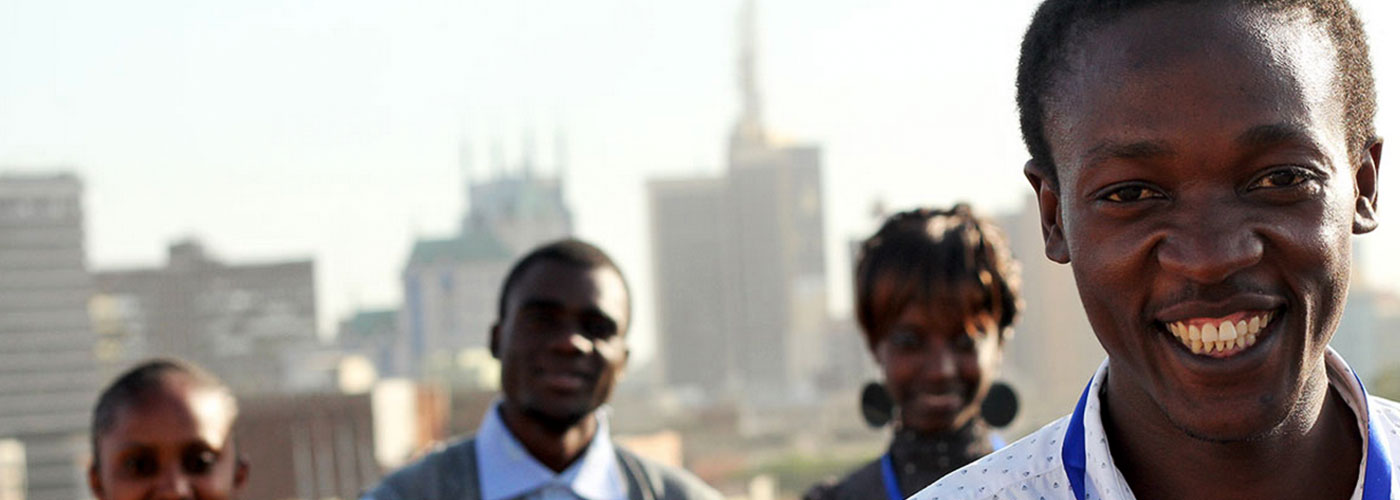The Eleos Foundation funds early-stage companies that empower people living in poverty to improve their lives. We invest in health, education, sanitation, safe drinking water, energy, and rural livelihoods. We help startups cross the so-called “Pioneer Gap” (from seed or pilot stage, through Series A or Series B rounds) with a combination of risk capital and advisory support, both of which are critical to success.
We look for social impact that is aligned with, and scales with, financial success. Tweet This Quote
We strive to be an “entrepreneur’s investor,” forming a trust-based partnership with each of the teams we invest in. This always involves active engagement and support, and usually participation at the Board level. While we have funded businesses in other parts of the world, we currently focus on the East Africa region of Kenya, Uganda, Tanzania, and Rwanda.
Key investment criteria
Of course there are multiple success factors that we analyze in our due diligence process, but we can distill them down to three buckets:
1. The impact model: If the company succeeds at achieving scale, will the impact be worth it? After all, we are impact-driven investors. If we see a company with huge profit potential but the social impact story is not compelling, we won’t invest. We analyze both the depth and breadth of impact: we need evidence of transformative impact at the household level—more than incremental impact or a convenience—and ideally the potential to impact one to two million people within a decade. We look for social impact that is aligned with, and scales with, financial success.
We know that real impact only comes from achieving scale, and scale only comes with a profitable business model. Tweet This Quote
2. The business model: We know that real impact only comes from achieving scale, and scale only comes with a profitable business model. There are multiple factors that we look at when analyzing a business model. For example, we want to see a clear and compelling value proposition: a product or service that is superior to existing alternatives, is clearly affordable and accessible, and meets an existing market need. We need to see evidence that demand is there. We look for a differentiated product that has a sustainable competitive advantage. We want to see a clear path to profitability and unit economics that work.
One example of a model we like is Sanergy, which makes hygienic sanitation affordable and accessible for residents of urban informal settlements, initially in Kenya. Sanergy provides a clearly superior value proposition for its customers, both in terms of healthiness and dignity. In turn, the company collects and converts waste into valuable byproducts such as organic fertilizer sold to medium and large sized farms. Sanergy’s impact success is woven into their financial success: the more fertilizer profits they generate, the more hazardous “inputs” are pulled out of densely populated, informal settlements.
3. The team: Do we believe that they have what it takes to succeed in building a company that will achieve its financial and impact goals in a tough environment? This is where being an entrepreneur’s investors comes into play.
An “Entrepreneur’s Investor”
The philosophy behind our engagement model centers on this principle: we believe in backing strong entrepreneurs, empowering them with resources, and letting them lead. So we’re careful about picking leaders who can navigate the long and challenging road of building a successful company, and who we can partner with through thick and thin. The adage is true: it’s easier to make changes to a business model than make changes to a team.
It’s easier to make changes to a business model than make changes to a team. Tweet This Quote
From the outset, we work with the team to develop a set of milestones that we all agree will clearly demonstrate traction towards financial and impact success. As the company achieves these milestones, Eleos invests increasing amounts of capital and assists the company in attracting other aligned, value-add investors. Once a company has crossed the Pioneer Gap, our intent is to pass the baton to the larger growth investors and redirect our energy to our earlier stage companies.
Given the emphasis we place on a company’s leadership, what are the key qualities we look for?
First, we have to believe in the entrepreneur’s integrity and sense of fair play. Challenges and ambiguities inevitably arise, and we have to be confident that we’ll be met by our partners on the common ground of trust, honesty, and fairness. A corollary of this principle is that we need to have what Ernest Hemingway called the “true gen”—genuine, accurate information and assessment regarding developments and challenges. There is temptation for entrepreneurs to put a positive spin on things, but this is counterproductive and impedes the timely action that’s so critical in the early stages of a business. In short, we approach investing with a partner mentality, and it’s critical that entrepreneurs do the same.
We approach investing with a partner mentality, and it’s critical that entrepreneurs do the same. Tweet This Quote
Second, we look for entrepreneurs who are a combination of “sponge and steel”—possessing an openness to advisory support and feedback loops, while also demonstrating the tenacity, passion, and commitment to never say die. In mainstream venture capital, fundable entrepreneurs must have a demonstrated track record of success in their field. However, in impact investing we mostly back less experienced entrepreneurs, and the “sponge and steel” character traits are essential to achieving success. Stanford psychologist Carol Dweck has done great work on developing a sponge-like “growth mindset.”
Third, we need to have confidence in the team’s capabilities and business savvy to carry out their business plan. We spend time with them on the ground pre-investment to make these assessments, and our staged funding model is also conducive to providing insight into a team’s capabilities and any gaps that may need to be filled.
A primary cause of entrepreneurial failure is a breakdown among the leadership team. Tweet This Quote
We also look for team cohesiveness, since a primary cause of entrepreneurial failure is a breakdown among the leadership team. One of our portfolio companies, Penda Health, shared a great resource for strengthening leadership team dynamics: Crucial Conversations by Kerry Patterson.
Lastly, we back entrepreneurs who have a solid connection to the problem they are trying to solve, and to the community where they are trying to work. Most successful companies are born from direct experience and observation, and a deep understanding of target customers’ needs. A good idea parachuted into an unfamiliar culture and environment is bound to fail.
A good idea parachuted into an unfamiliar culture and environment is bound to fail. Tweet This Quote
There’s nothing easy about this work. We’re all devoted to proving that business solutions are the most effective way to solve problems. At Eleos our role is to help empower entrepreneurs to get across the Pioneer Gap and scale up so they can achieve their financial and impact goals. Hopefully we are all continuously learning, adapting, and building a healthier ecosystem that inspires future entrepreneurs to create scalable solutions to tough problems. We’re honored to partner with Unreasonable Institute and the amazing Unreasonable Fellows! Click here us your proposals.



